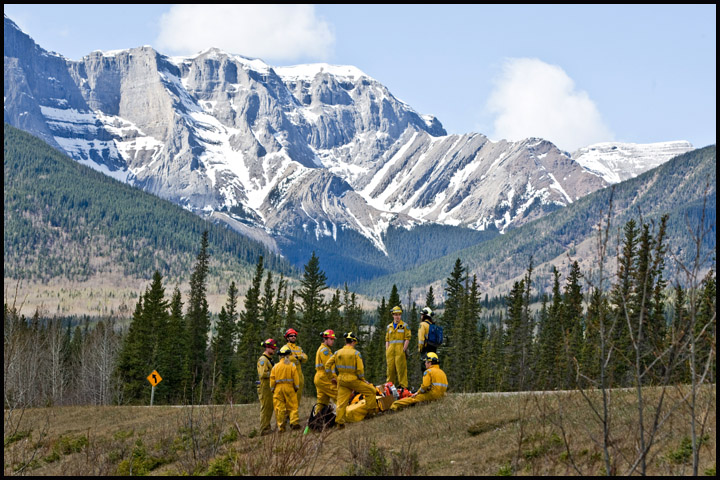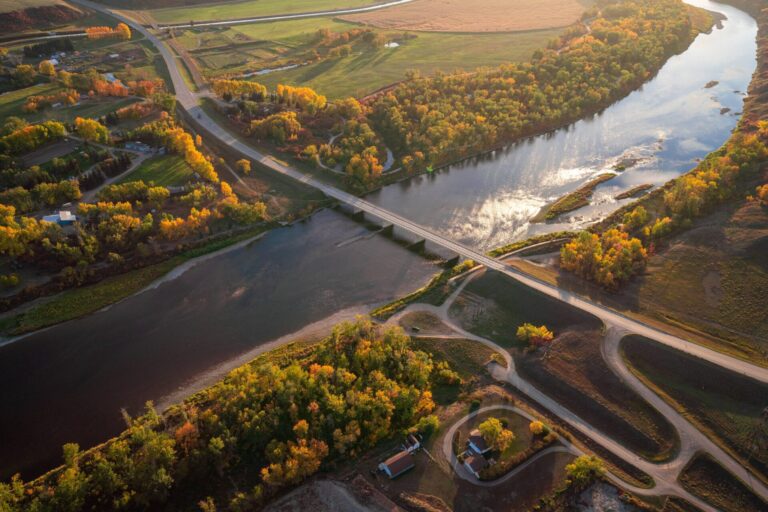Monday, October 6, 2025
By Madison Gaffney, Esq.
Canada’s wildfire epidemic is an uphill battle for scientists, firefighters, and policymakers alike. The wildfire epidemic continues to rampage Canada. Black carbon—wildfire smoke or soot—is seeping into the United States from western Canada at an alarming rate.
In Canada, for two consecutive years, wildfire season has started prematurely. It’s not just an issue for North America, as wildfire pollution warms the atmosphere and is a contributor to global warming, the leading environmental cause of poor health and premature deaths, and there are also potential impacts to geopolitical relations.
Many Americans blame Canadian policy for the wildfire transboundary air pollution; however, such condemnation is hypocritical.
Contributing factors of wildfire in Canada
Canadian land use, forest protection, and the preeminent climate change have exasperated wildfires in the north. Climate change’s most notable reminder is that most of Canada’s wildfires have been burning since the last fire season, called “zombie fires,” they have just smoldered during the winter under the snowpack. The peat fires beneath the surface, or snow surface, may smolder for years and release “substantial amounts of CO2.” These fires are hard to substantiate and there are simply not enough resources to prematurely fight these fires.
However, some climate scientists and firefighters have pinpointed wildfire symptoms. Firefighters in the area have stated that the magic formula is severe drought, low humidity, and high wind. Canada continuously makes proactive attempts to mitigate and terminate severe wildfires.
As climate change complicates potential wildfire policy, fire and forest managers are shifting towards a fire-permitting, “risk-based fire management system.” Fire permitting is a relatively new strategy for Canadian policymakers as they try and balance wildfire responsibility between private landowners, public land and national forest use, and tempering blame from southern countries.
According to pertinent law, fire permitting involves the acquisition of a permit to “burn wood, brush, leaves, and grass outside during the fire season” (April 1-October 31) unless the conditions allow the landowner to burn safely, the landowner takes all necessary steps to tend, control and extinguish the fire, and the party does not have an open fire in a restricted fire zone. Such requisites are imperative to supplement fire permits.
A study in rural Alberta attempted to implement fire permit uses and prescribed burning practices. The findings yielded that a large portion of landowners—despite the risk of wildfires—used fire without obtaining a permit. Some conducted unilateral prescribed burning on their property. In the long term, climate and wildfire scientists must conduct research regarding the individual landowner’s fire management on their property and how that management contributes or does not contribute to the Canadian wildfire epidemic.
A major issue is that Canadian private landowners are skeptical at least, and resentful at most, towards the notion of municipal, provincial, or national oversight regarding how they use fire on their land. Not only does the Canadian government have to diplomatically maneuver transboundary pollution geopolitical policy with the United States, it also has internal issues with its private landowners arguing for the “valorization of the individual’s capacity for wildfire management and protection.”
To overcome the wildfire season’s increase in potency and geopolitical encumbrances, Canadian policymakers and land managers must look backward and adjust their mitigation strategies.
Addressing transboundary pollution with international agreement
This article’s predecessor, available here, closely examines the U.S.-Canada Air Quality Agreement and uses the Act as a roadmap to curb wildfire transboundary pollution. Transboundary pollution is not a recent development nor a simple policy problem for neighboring countries. The EPA defines transboundary pollution as “pollution [which] neither recognizes nor respects territorial boundaries.”
Typically, anthropogenic means are a common cause of pollution that traverses geopolitical borders. Such pollution could taint the shared air, public and private waters, and groundwaters between two or more nations. This article’s scope, however, focuses on the absurdity of blaming Canada for any transboundary air pollution resulting from wildfires.
Typically, most transboundary pollution disproportionately affects one country due to natural causes, such as prevailing winds, and anthropogenic means (i.e., improper land-use practices and forest management). Of course, to put it lightly, the transboundary air pollution from Canadian wildfires is causing negative environmental and human health issues. For example, unprecedented quantities of air pollutants and greenhouse gases were released into the atmosphere from Canada’s wildfires. The wildfire-related GHG emissions “constituted more than doubled Canada’s planned cumulative anthropogenic emissions reductions in 10 years.”
Trail Smelter case and the transboundary harm principle
The outcry in the U.S. and the blame towards Canada is reminiscent of the notorious Trail Smelter case from 1938, which established the “harm principle” in the environmental law of transboundary pollution.
The transboundary harm principle provides that no state can use or allow the use of its territory or state in a manner that causes significant harm in the territory of other states. This principle further attempts to preserve states’ and territories, fundamental right to sovereignty while also maintaining transboundary interaction for geopolitical purposes and cooperation. The transboundary harm principle has an opposing axiom—‘the principle of non-intervention.’
The International Court of Justice (ICJ) defines the principle of non-intervention as the “right of every sovereign State to conduct its affairs without outside interference.”
Transboundary harm—such as black carbon pollution emanating from wildfires—is corrosive to the non-interference principle. Bilateral and multilateral agreements like the U.S.-Canada Air Quality Agreement work as a prophylactic measure against transboundary harm, but not public opinion. This is not to say that the U.S. is wrong or their anger is erroneous against wildfire smog and smoke being transported down from Canada.
Typically, the U.S. celebrates non-intervention. This article’s purpose is to point out the hypocrisy of the U.S. media’s narrative. Instead of looking to thrust blame or policy upon Canada, a few policymakers and climate experts in the U.S. are calling for updates to national disaster policy.
Updates such as highlighting the Wildland Fire Commission report to Congress, “incorporating smoke waves into disaster policy so that critical funding and decision-making information reaches impacted communities and the first responders who protect them,” and pushing for proactive prescribed burning.
Outside of bilateral agreements such as the AQA, the U.S. is powerless to implement policy beyond the northern geopolitical border. Therefore, it is imperative to focus on what we can control; such as fixing flawed forest management and wildfire legislation while funding climate change mitigation measures.
U.S. lawmakers have tended to prioritize protecting homes and businesses and the lawmakers see wildfires as a threat to that goal. Due to wildfire’s potential for impacting the health and safety of humans and the environment (in both countries), current policies surrounding wildfire management predominately focus on the method of excluding.
This exclusion (also known as suppression) is the act of extinguishing or fighting fires. Common sense would say that immediately extinguishing wildfires is the safe, wise, and correct choice.
Although well-intentioned, both the U.S. and Canada’s utilization of a de facto exclusion policy is misguided because scientific research indicates excluding wildfires increases fuel loads and alters the forest’s composition and structure.
Therefore, the de facto policies are leading to hotter and larger fires, meaning more emissions of black carbon will traverse the U.S. and Canada border. Non-intervention, consequently, will be erased as wildfire transboundary policy (from both sides of the border) fails to evolve.

Madison Gaffney, Esquire is a JD graduate of the Vermont Law School.
Note: This is a summary of a more comprehensive report that includes academic citations. To read the complete report, please contact the author directly at madisongaffney@vermontlaw.edu.
Featured image of Waterton National Park in Alberta following wildfires. Credit: Getty Images.












